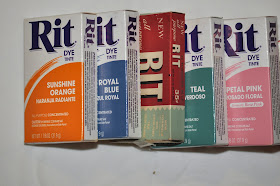Yesterday I introduced making paper. Today I want to talk a little more about the different types of pulp you can make. For a great book with fantastic papermaking recipes check out Mary Reimer & Heidi Reimer-Epp's Book 300 Papermaking Recipes. Truly a great source for papermakers. Besides the recipes they also have a few resources in a directory at the back of the book. Websites and store locations, such as papermaking suppliers for things like pulp and papermaking tools. Which leads me to one of the first materials I want to discuss.
Semi-Processed Pulp:
You can buy paper pulp made out of abaca or cotton from online vendors. I have never tried this technique before. Mostly because I find it hard to spend money on pulp when I have TONS of things around the house that I could use for FREE! Though by what I've read and have seen in photos the store-bought-pulp has a smoother finish and it will last longer. Arnold Grummer has a fantastic website for papermaking supplies, if you want to check out prices on pulp.
Recycled Paper:
This is my favorite, because I always seem to have junk paper around! Plus this type of paper is stronger, and the pulp is easier to work with than a plant based pulp. You can use just about any type of paper around the house, as long as it doesn't have a glossy sheen to it. I've used junk mail, leftovers from paper crafting projects, tissue paper, shredded packing paper, you name it I've used it! Here is how the paper from yesterday's crayon papers turned out:
This is the variation in my pulp for my seed starters:
The yellow cups' pulp was made of shredded junk mail, and it had some orange paper in it. The one in the center is made from the crayon papers. The grey cups are made from junk mail and black shredded packing paper.
Plant Paper:
I really enjoy the results when making paper out of plants, but the pulp can be rather finicky. You can use just about any plant.
I've used weeds from the garden, and onion skins. The above photo is an example of both. Sometimes mixing the organic material with a bit of shredded junk mail helps bind everything together, and tone down the plant color.
When using plants for pulp it is best to cook them on the stove for a couple hours to break down the organic material. Sometimes using an alkaline solution is needed to break down the material. In this example I'm using a cabbage with just water.
If you aren't able to use the plant to make paper at this time, you can freeze this and reheat it later.
This is what the pulp will look like once it's been cooked, blended, and plenty of water added to thin the pulp out.
This is what a sheet of it looks like wet. It was easier to make this paper thick more like card stock, rather than thin like printer paper.
Additives:
Another great trick is to add different things to your pulp to liven it up, especially if it's on the bland side. Depending on the look you're going for you can add this while you are using the blender, or you can hand blend them in your papermaking tub.
I like to use brightly colored shredded paper for adding color, because you don't have to mess with dye.
Adding flower petals or dried leaves by hand can add a beautifully delicate touch.
You can never go wrong with glitter. Or you can also use confetti, maybe in heart shapes for Valentine's Day.
Fabric dye or food coloring are great for papermaking! You can bleach your pulp with a weak solution, and then add dye of any color.
Tea bags, coffee beans, or fruit can naturally dye your paper beautifully as well.
Just get creative! If you can dream it up, try it out! There is no limit to the possibilities when it comes to paper. Tomorrow we will talk more about drying techniques. Until then Happy DIYing!
















No comments:
Post a Comment